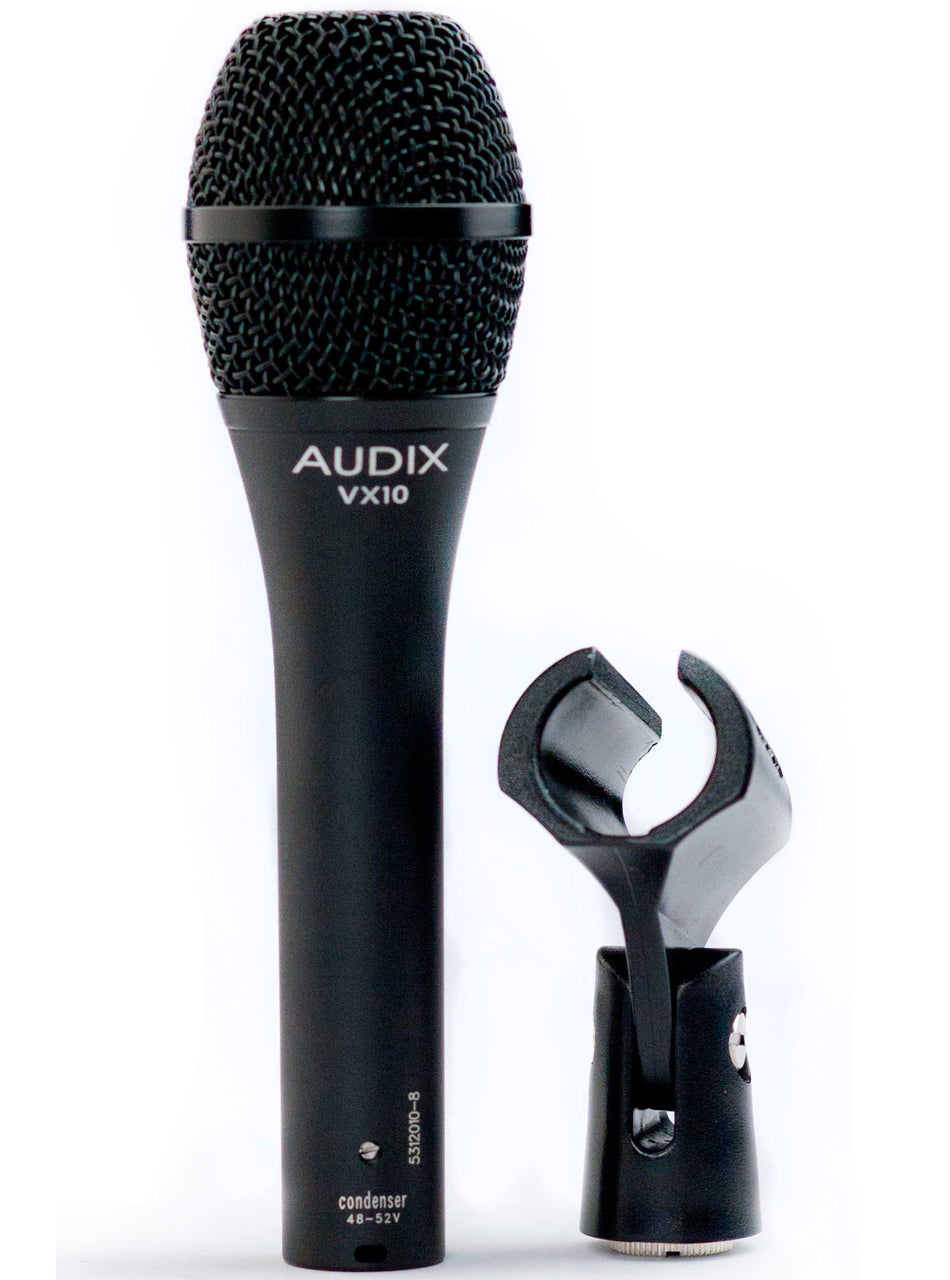Description
Audix VX10 Condenser Microphone (Cardioid)
The VX10 condenser vocal microphone was designed to set new performance standards for live sound and broadcast applications. With a uniformly controlled frequency response from 40 Hz 20 kHz, the VX10 is highly sensitive to transient response and will reproduce vocals and speech with exceptional detail and realism.
The VX10 has a cardioid polar pattern which helps isolate vocals. This mic includes a 21 mm gold vapor capsule and a multi-stage internal pop filter. It is also available in a low output model (VX10LO) for greater control with loud stage volumes or extremely powerful vocalists.
Aside from vocals, the VX10 cardioid condenser microphone will capture acoustic instruments such as guitars, woodwinds, brasses, percussion toys, drum overheads, hi-hats and pianos.
Applications
- Live and studio
- Lead and backing vocals
- Speech
- Acoustic instruments
- On air announce mic
- Live broadcasts
Specifications
|
Type |
Condenser |
|
Polar Pattern |
Cardioid |
|
Frequency Response |
40 Hz 20 kHz |
|
Impedance |
250 Ohms |
|
Sensitivity |
@1k = 24mv / Pa; (VX10Lo) = 4mV / Pa |
What's In The Box
- 1 x VX10 Vocal Microphone
- 1 x CASEWOOD Foam lined wooden carrying case
- 1 x MC1 Microphone Clip
- 1 x P1 Carrying pouch
The VX10, an excellent choice for lead and background vocals, has a cardioid pick-up pattern which helps to minimize sound from other instruments on stage from “bleeding” into the microphone. The VX10 is highly sensitive and will accommodate working distances of 1-12 inches from the performers mouth. Depending on the instrumentation and volume on stage, the vocalist may have to experiment to find the optimum working range. When using stage monitors, avoid pointing the back of the microphone directly into the stage monitor. Instead, set the microphone at an angle parallel to the floor, putting the angle of the mic on a different plane with the angle of the monitor. Allow a distance of 2-3 feet between microphones to avoid phase cancellation issues.











